If you’ve ever struggled with cold feet in bed or while lounging, CozyFeet might be the perfect solution. Founded during the pandemic by CorinneO& ...
How DOGPAK Transformed Dog Adventure Gear
Written by: Carolyn Young
Carolyn Young is a business writer who focuses on entrepreneurial concepts and the business formation. She has over 25 years of experience in business roles, and has authored several entrepreneurship textbooks.
Published on February 13, 2024
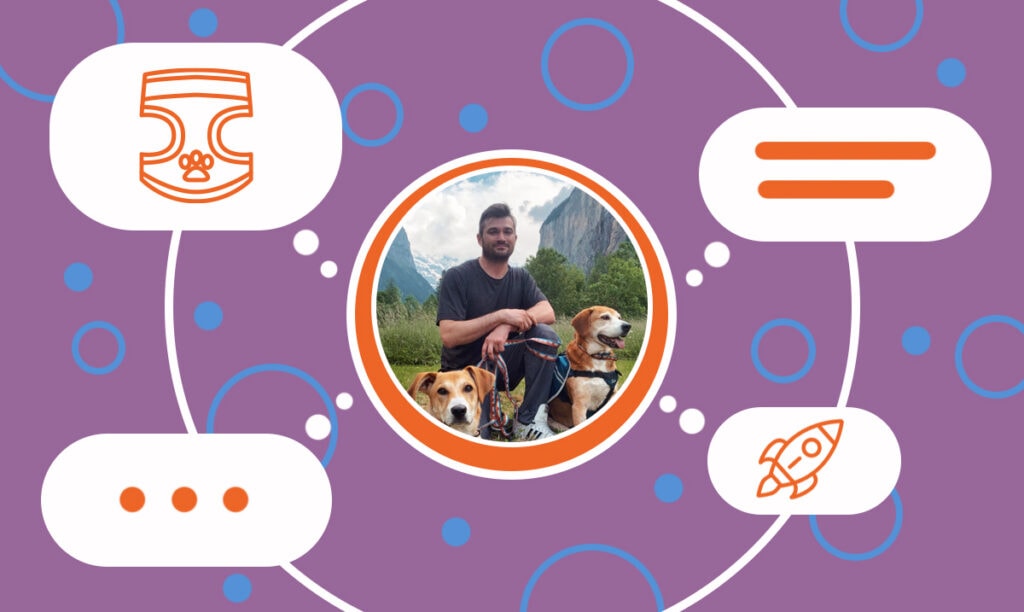
In this captivating interview, we delve into the inspiring journey of Devin Kelly, the visionary founder of DOGPAK. Fueled by his passion for adventure and a deep bond with his dog Thunder, Devin shares the story of how a basement project during COVID lockdowns evolved into a pioneering venture in the world of outdoor gear for dogs.
Discover the innovative approach behind DOGPAK’s high-quality, ultralight equipment, and learn how Devin’s unique experiences and challenges have shaped a brand that’s not just a business, but a tribute to the spirit of canine companionship and adventure. Join us as we explore the paths and strategies that led DOGPAK to become a beacon for pet lovers and outdoor enthusiasts alike.
The Story Behind DOGPAK
SBS – How did you start DOGPAK, and what was the main motivation behind it?
Devin – It all began during the months of COVID. I was stuck in the US awaiting my visa for Switzerland, and there was no telling when it would come. Before that, I had traveled all over the world with my dog Thunder for at least 11 years. He’s 14 and a half and in good health. He’s doing great. We also have a new puppy, and Thunder, my old dog, was running back and forth with it just yesterday. It’s awesome to see he’s doing great.
Thunder was the impetus for me to start DOGPAK. I wanted to give him an homage or a tribute for all of the adventures that we had shared. Thanks to my background as a parachute rigger for skydiving and BASE jumping, I already had some understanding of different kinds of materials that make for great outdoor gear. I already knew how to sew a bit, and, in all of our travels together for the last 11 or 12 years at that point, I knew it was hard to find high-quality outdoor gear for dogs (things like backpacks or harnesses that were secure enough that you could go on rock climbs, belay your dog, or repel down a cliff face with your dog). I started thinking about gear I could make for my dog, and it started just as a basement project on my sewing machine. I just made some gear that I thought would be helpful for me and Thunder.
While stuck in the States, I stayed at my mom’s house, wondering how long it would take to get my Swiss visa. She coerced me into considering starting a business where I would make this kind of outdoor gear for dogs. I needed it then, and surely, many other people who love to adventure with their dogs also need that gear. That got the wheels turning in my head. I started thinking about things. I started brainstorming with my mom, even for a name for the company, eventually coming up with DOGPAK.
I understand that people start businesses for money. Still, for me, there was heart in this pursuit, in the mission to help other people who love to adventure with their dogs, to make it easier for them to get outside, enjoy the outdoors together with their dogs, and bring their dogs on their adventures. We could facilitate that if we made the right outdoor gear for dogs.
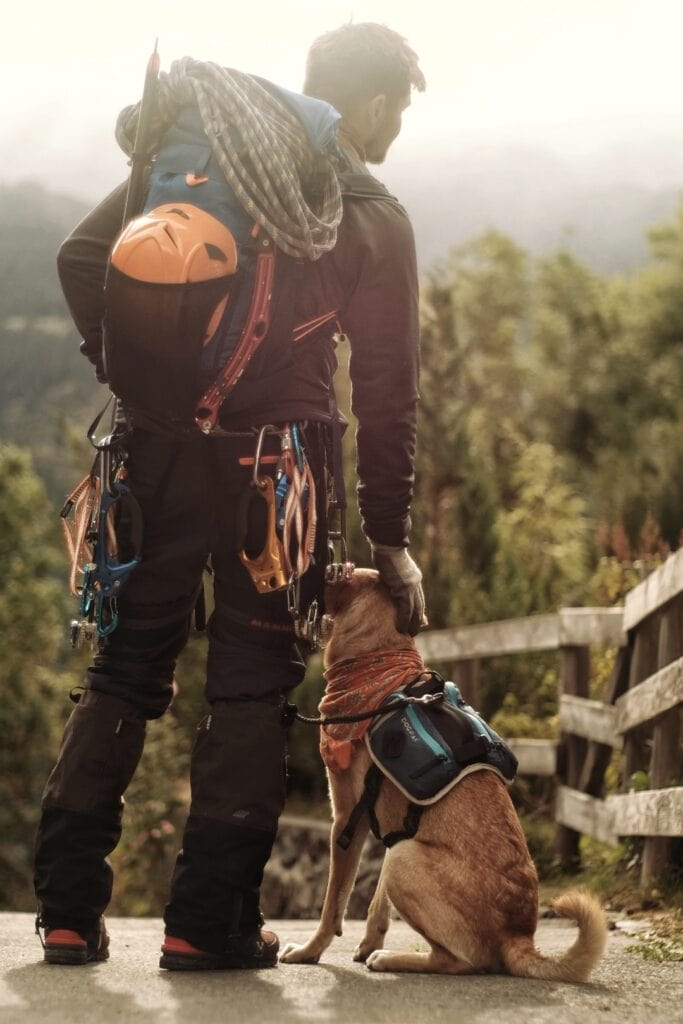
The Choice of Materials
SBS – How do you choose the materials for your outdoor equipment, and what is the design process?
Devin – There are a few important components when it comes to outdoor K9 gear and the materials we use to make it. One is weatherproofing — waterproofing or at least water resistance. Another example is ultralight material, which is very durable while not weighing much.
In the past, people used things like leather or canvas when building outdoor gear for humans, horses, mules, and dogs. Canvas, leather, and stuff like that have their applications but are very heavy. Even in human outdoor gear, we’ve moved away from that trend because it is heavy. It’s also not the most weatherproof without waxing or other treatments. Instead, in human outdoor gear, we’ve seen all kinds of innovations in material technology to make things ultra-durable, ultralight, and highly weatherproof. Yet, for some reason, in the world of outdoor K9 gear, I couldn’t find anything made with those kinds of materials, and I was surprised to see that. That was the initial criteria for the materials I started using to build backpacks and harnesses for Thunder.
I took inspiration from the ultralight backpacking community of people. Among the materials that they use, there were a handful of different kinds of materials, like Cuben Fiber (now called Dyneema Composite Fabric, or DCF), gridstop (an innovation from the United States), Robic ripstop nylon (a new kind of nylon that is lighter and stronger than regular nylon 6), and X-Pac. These are just a few examples. Surprisingly, I couldn’t find any of these materials in a backpack for dogs. Yet what’s so important for dogs, even more important than humans, is that the backpack or the harness must be very lightweight and ergonomic.
Dogs are generally smaller than us, and even if they’re not smaller, a dog is built differently than a pack animal, like a mule or a donkey, which were, in a way, bred to hold weight. We wanted to make every piece of equipment, starting with our backpacks, as ultralight as possible, so we looked to the ultralight backpacking community for humans for inspiration in their materials, and we started making prototypes using those materials. Not only are they ultra light and highly durable, often reinforced with things like Kevlar reinforcement threads for extra abrasion resistance, but they are also highly waterproof and weather resistant.
As far as I could see, that was difficult to find for outdoor K9 gear. It seemed to me that most of the products on the market were designed with materials that we were using 20 or 25 years ago in the human outdoor gear world, so I saw an opportunity to bring an update to outdoor gear for dogs by using these new materials that offer benefits like weatherproofing, being ultralight, yet highly durable, and also relatively easy to work with. They are not impossible to work with. For sewing and manufacturing, they’re very similar to your regular nylon or polyester ripstops or Cordura.
Standing Out
SBS – What other things make you unique when it comes to your competitors?
Devin – I’m happy you asked because one of our struggles as a new company is to help our client base become educated about these topics. People often don’t necessarily know that certain pieces of equipment might be better than others for whatever reasons, and that can be a struggle. We are using these updated materials in our backpacks, as mentioned before.
In addition, we use highly reflective tapes around the backpack’s frame. All silver parts are highly reflective, including the favicon on the front of the chest. The taping around the pack’s perimeter is so wide it catches the light. It’s a super reflective material. It makes it easy to spot the dogs at nighttime if you have a headlamp flashing on them. If you’re camping or if your dog gets away in a crowded town or a city where there are cars and traffic, it makes it super easy to spot or easier to spot and hopefully helps prevent any catastrophe. I know from personal experience how helpful that is.
In the dog market, in outdoor K9 gear, there are some great options, but our backpack design improves on those in a couple of key ways, one being the material and two being how highly reflective it is. But also, we use certain techniques. For example, in the cinch strap across the dog’s chest and belly, we use a technique that has been used in human backpacks, where we sew a piece of elastic into the nylon webbing strap, and that elastic allows it to stretch just a little bit, ensuring a very snug fit on the dog. It helps prevent the pack from slipping side to side as the dog is running, trotting, or climbing stuff.
There’s also a pretty cool little thing that I came across when working with and studying different kinds of materials to use. We came across three-dimensional D-rings that actually stand up by themselves. These are the D-rings where the leash will clip to. Rather than just being flat and lying flat, that kind of D-ring is always standing up, so you can clip the leash on easily with one hand. It is a small thing, but I found it so convenient.
The other thing I found with many dog backpacks on the market is that not much thought was put into shaping the pack itself and where the heavy load would be carried over the dog’s back. The heavy load must be focused more towards the front, sitting above the dog’s shoulders, where the dog is strongest. So many backpacks use a normal round or oval design, and, a lot of times, it causes the items inside to slide backwards, putting more weight on the dogs in the middle of the spine, where they are the weakest. You want to avoid that, so our pack shape helps to focus all the weight just behind the dog’s shoulders, where the dog’s bones are the strongest. That helps dogs take a load and prevents whatever they’re carrying from sliding around and bouncing back and forth, creating a jarring motion on their joints as they run the trails and adventuring.
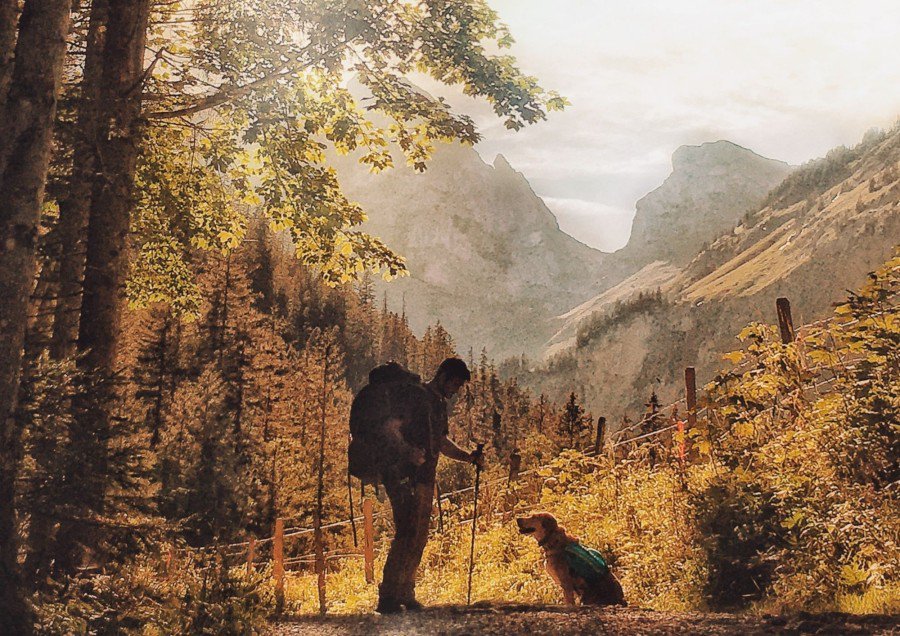
Successful Marketing Strategies
SBS – From the marketing perspective, what strategies have been the most effective in driving traffic and sales to your online store?
Devin – That’s a huge aspect of the business. That’s the business side of things. I approached this business as a passion for adventuring with my dog. But at some point, we also have to be smart about the business side. So far, what I’ve found to be most effective is compiling articles I’ve written about different aspects of backpacking with your dog into a mini ebook and offering that to people for free for signing up for our newsletter.
We also ran Facebook, Instagram, and Google Ads advertising with video content, showing some videos of dogs out playing with their backpacks and stuff. We tried to make it an engaging video to capture our potential clients’ attention. We said, “If you’d like to learn the top seven tips for backpacking with your dog, give us your email address, and we’ll send you this free ebook.” Within a pretty short period, that brought in a big boost in the percentage of people we could convert into signing up for our newsletter. With our newsletter, we helped people who were already interested in adventuring with dogs and educated them on things to consider when buying a new dog backpack.
Educational Blog
SBS – How does the content on your blog support your business goals? Do you think about topics from strategic reasons, or do you try to explain what you believe is important to be on the blog?
Devin – It’s the second thing. We approach the blog thinking about what would be helpful to our demographic. We also try to mix the business strategy into the blog. But first and foremost, the blog is there as a guide to help people learn about topics that they might be interested in. We even stray a little bit; I may not be directly personally interested in a topic, but I know that some people would be, so we will also include that in our blog articles, as long as it’s related to being a dog owner or adventuring with dogs. But the business strategy behind that, to me, is the desire to have our website be a one-stop shop site that people can come to and not only buy the products that we offer but also find the education about owning a dog and especially adventuring with your dog.
The Community Arround the Brand
SBS – Do you foster a sense of community among your customers and fellow dog adventurers?
Devin – Yes. That’s huge. Not only from a business perspective, but just as a dog owner who belongs to this niche myself, that sense of community is so helpful because you can ask a question and be sure that somebody else has had that same question and has learned how to deal with it, often the hard way, and can then advise you on what’s the easiest way to deal with that. From a business perspective, we create a sense of community around our clientele or potential customers, and we do that through our newsletters, blogs, social media presence on Instagram, TikTok, etc.
Industry Challenges
SBS – What were some challenges that you faced in the pet e-commerce industry?
Devin – Within our niche, there are already a couple of well-established brands people look to for their outdoor K9 gear. Our biggest challenge has been establishing ourselves as a brand, getting brand recognition, and spreading brand awareness to let people know that we exist and that we are making products that improve on other designs that are out there on the market. But we are still a small fish in a very big pond.
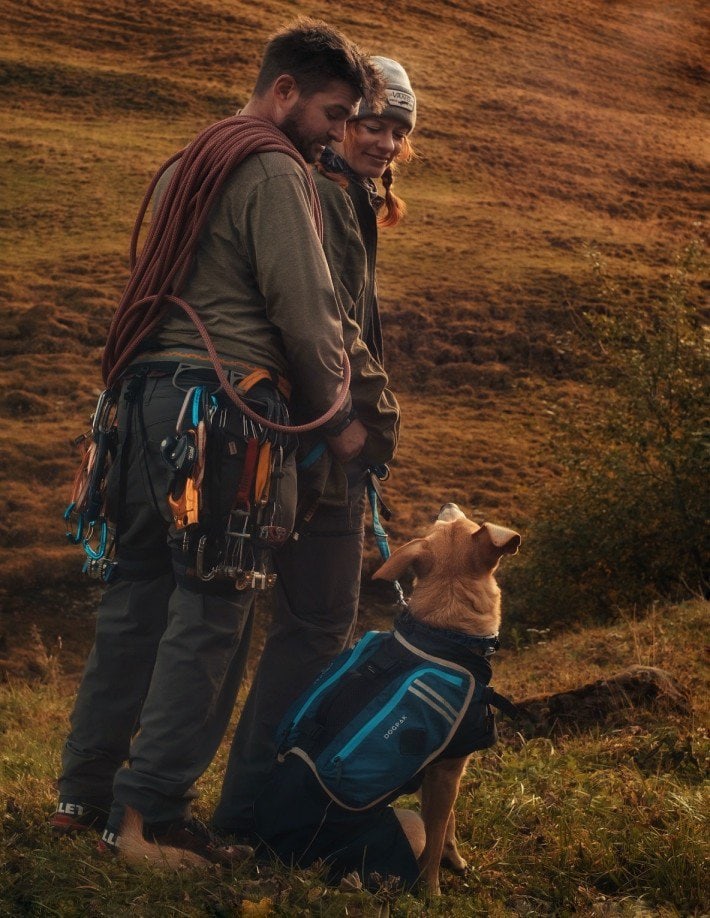
Integrating Customer Feedback into Designs
SBS – How important is customer feedback for you when making the products? Do you incorporate it into your designs?
Devin – It’s super important. It’s one of the most valuable things to focus on as a business. I have my own experience of adventuring with my dog, but that’s limited to my own experiences, and there’s so much more to know and understand out there in the world and within our niche. There are challenges that other people have faced trying to travel with their dogs that I never even thought of, so hearing their input is so helpful. It’s irreplaceable. You need to listen to your clients and your customers. I often feel that I’ve thought about everything I can think of when building a new design, but then somebody else suggests something, and I realize I did not think about that.
All of the human effort requires a trustworthy team. Everything we’ve built that is meant to last and stand the test of time, all of our technological advances, comes from collaborative effort. No one person can think of everything. I can’t design everything perfectly without feedback. It’s really important as an owner to humble ourselves and have the humility to look for our customers’ ideas or to hear their feedback. Maybe they say, “I like this about the pack, but this is causing this problem,” and this problem is something I never even thought about. Listening to our customers has helped me build an even better product the second or third time around. I couldn’t do it just from the top of my head.
Upcoming Launches
SBS – Can you share some upcoming products or future initiatives that you’re excited about?
Devin – We are excited to expand our product line now that we’ve launched our flagship product, an ultralight dog hiking harness and dog pack. We want to expand that line to include another model of dog backpack, one meant for colder weather hiking or long-term hiking, where the dog might carry a few more items. Speaking of cold weather, we’ve already started designing dog jackets and coats for both rainy and cold weather. We are excited to see some success with our initial product launch and be able to launch these dog jackets and dog winter coats pretty soon. We already have prototypes for dog boots, too, which also help in different cases, from hot deserts to hikes in the snow (because snow often clumps into the dog’s fur under their paws).
In the future, I want to develop a whole product line, from leashes and collars to dog goggles for UV protection from the sun. I work with the alpine rescue team in Switzerland, and our new puppy is in training to be an avalanche rescue dog. Some of the equipment that is helpful for that kind of environment is dog goggles that block the UV light from damaging the dog’s eyes because we’re always in the snow at high elevations.
We already have tech packs and prototypes in place, so dog jackets will be ready in about six months, which will be good timing for people thinking about getting a winter coat for their dogs just before the winter. We’ll be going into the colder season, so those will likely be the next products we offer. We’re more on the year-long timeline for the other products I mentioned.
Advice for Entrepreneurs
SBS – What advice would you give anyone wanting to start a business? Is there something you’d like to have heard when you were starting?
Devin – I have one piece of advice I wish I had given more consideration to in the past: to sell your product before you purchase your product. What I mean is you must ensure that you already have people interested in the product that you want to design. Build and test that somehow with your client base, and be sure that you will have people who will buy this product before you pay out of pocket to have units made. I did it backwards, and there was a period when I was very stressed about that, and I wish I had done it the other way around. I wish I had done more market and customer research first to make sure people wanted the product before I ordered several hundred units.
Subscribe to Our Newsletter
and gain insider access to cutting-edge business insights and trends.
Featured Resources
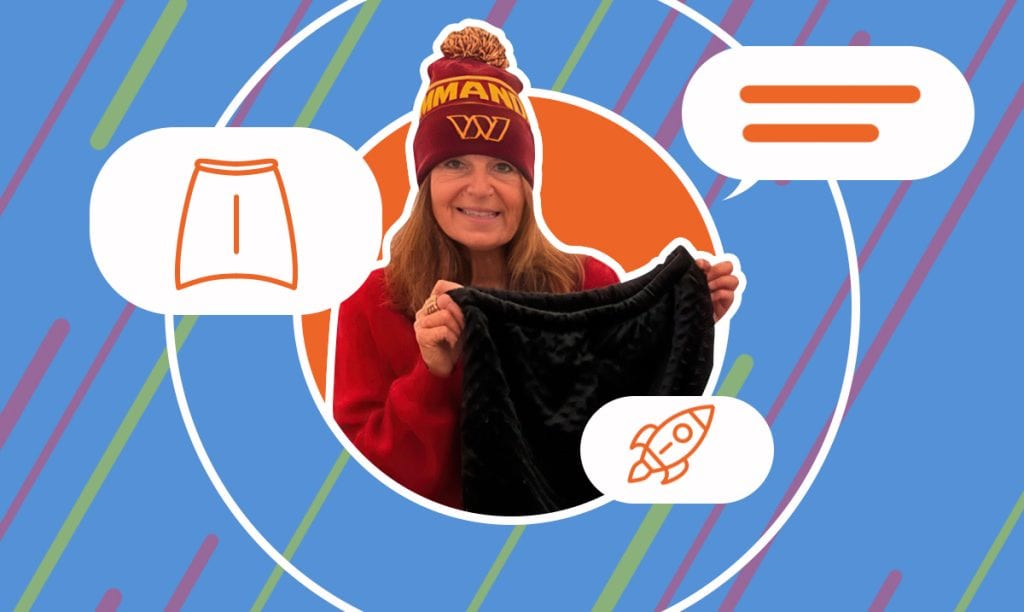
How CozyFeet Foot Warmers Help with Cold Feet Issues
Published on February 27, 2025
Read Now

How Plaza Japan Found a Niche in Japanese Anime and Hobby Products
Published on August 26, 2024
Jun Ibaraki, the visionary behind Plaza Japan, transformed his passion for Japanese culture into a thriving e-commerce business that bringsauthentic ...
Read Now

How Natalie Created a Thriving Maternity Clothing Brand
Published on July 29, 2024
In this interview, we dive into the inspiring journey of Natalie Pitts, the CEO and founder of Go MamaMaternity. Discover how Natalie identified ...
Read Now
Comments